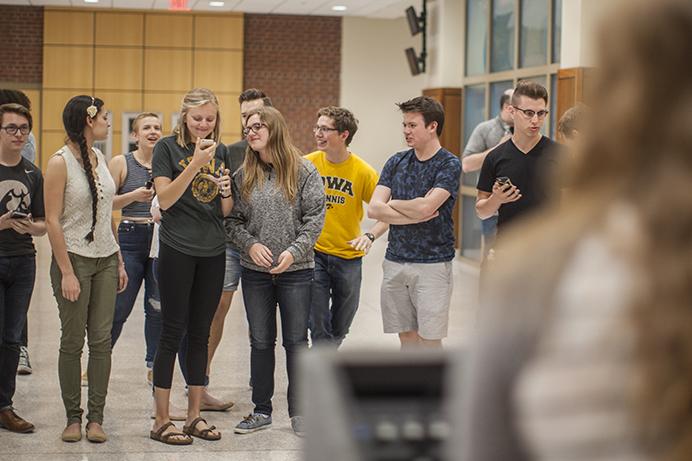By Dot Armstrong
I have a confession to make: I did not vote in the University of Iowa Student Government elections. I was in a fog of senioritis and forgot to perform my democratic duty. And, between you and me, I have little faith that UISG possesses enough power to do more than superficial or cosmetic stuff. But the winners got my attention: Jacob Simpson, president, and Lilián Sánchez García, vice president. The Bridge UI leadership team, forming President and Vice President duo who ran unopposed, established themselves early in the race as a force for comprehensive change on campus and beyond. To my surprise — and after some research — I started to believe in UISG.
Bridge UI places an emphasis on sustainability, in every sense of the word. It’s a term that connotes genuine foresight and sensitivity to myriad concerns in a community. — in short, the opposite of a quick and dirty fix. Here at the university, sustainability is a buzzword manifested in recycling containers, reusable water bottles, and bike lanes. However, sustainability can be used abstractly to discuss good policy in all areas of campus life. If certain portions of students aren’t getting what they need, the system isn’t sustainable. If there’s a disconnect among administrators, legislators, and students, the system isn’t sustainable. And Bridge UI is here to rewire crucial lines of communication. This approach is crucial to institutional survival, especially in times of cultural and financial upheaval.
Simpson, who also happens to be co-president of UI Gardeners, knows a thing or two about sustainability — in the greenhouse and in government. He and Sánchez have proposed a slew of progressive initiatives to implement sustainability in myriad ways.
Among the initiatives are practical goals for meeting high environmental health standards. From expanding composting programs to creating a sustainability-coordinator position for the university at large, the new UISG admnistration will be at the forefront of greener policy. Bridge UI also promotes accountability in academics.
Under the new administration, you might see books for classes available at campus libraries, more interdisciplinary classes, better pre-professional courses, and streamlined bureaucratic processes for transfer students. Bridge UI fights for monetary stability as well. Look for greater transparency/equity with tuition and fees, increased “financial literacy” programs, revised FAFSA guidelines to help more students receive aid, more scholarships, more housing hacks for cheap residence off-campus, and a professional clothes bank in case you don’t have a suit and tie for that Job Fair interview.
All of the above sounds idyllic. But, as any senior knows all too well, the great caveat to good intentions is time. Though the visionary enthusiasm of Bridge UI’s mission got me excited, I remain skeptical about the logistics of its ideas. It’s a tall order. Jacob set the administration’s plucky agenda for the coming year, admitting he knows the stakes are high: “The platform we developed was inspired by a commitment to a holistic perspective of the student experience … Our goal is to accomplish each initiative on the platform — this goal will be a challenge, but it is possible.” Simpson and Sánchez have a short term and a lot to accomplish if they are to live up to their inspiring aspirations. The two will take office May 1 and remain in power until April 30, 2018.



